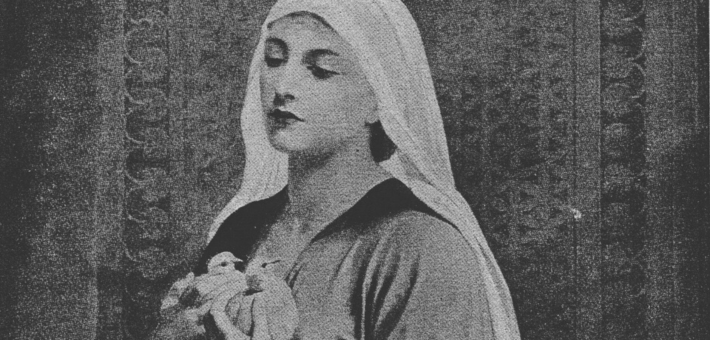Commentary on Ruth 3:1-5; 4:13-17
The book of Ruth has been widely read and understood as depicting a story of profound challenges for its main characters, Ruth and Naomi, and their resilience in the face of those trials. Yair Zakovitch, for example, describes the main protagonists as all “helpful, considerate, and well-intentioned” amid great misfortunes.1 Similarly, Jennifer Koosed reads the story as a fairy tale wherein the “fairy-tale heroine Ruth must persevere through adversity to obtain her goal”: security.2 For both Zakovitch and Koosed, the moral of the story is that hesed, kindness, generosity, and loyalty lead to success. Indeed, the book reflects these themes but includes others as well, namely the misuse of power through sexual abuse and marginalization.
As noted in last week’s commentary, Ruth, Naomi, and Orpah all experience famine, a national crisis, and the loss of husbands: personal crises. Naomi also loses her sons, who were married to Ruth and Orpah. Naomi’s daughters-in-law become widowed without children, which results in further personal and economic crises. The need to migrate in response to famine and economic instability exacerbates these experiences. Orpah returns to her home and family, while Ruth vows to remain with Naomi, which sets the stage for the next couple of chapters.
In chapter 2, the vulnerable “ethnically other” migrant Ruth takes the initiative to transform her and Naomi’s economic conditions by working in Boaz’s fields. This results in Boaz taking notice of her (2:5), providing her physical security from threatening male workers (2:9), giving her water and food (2:9, 14), permitting her to glean from his field “among the standing sheaves,” and instructing his young men to pull out some handfuls for her from bundles so that she can glean them—activities that are permitted without reproach (2:15–16). Consequently, Naomi takes notice of Boaz’s acts of kindness toward Ruth (2:19) and devises a plan to “seek some security” for Ruth (3:1).
Ruth 3:1–5 details Naomi’s plan. At first reading, this plan might be perceived as innocent help. Yet, scholars such as Fulato Moyo argue that Ruth is a beautiful young woman who is trafficked and must sell her body to a “man old enough to be her father” so that her mistress Naomi can have her property restored.3 Moyo points out that Naomi’s and Ruth’s “gender and identity as sonless widows” mean they cannot adequately support themselves or claim their inheritance of land and means of survival. Thus, they are desperate widows and Ruth is wholly at the disposal of Naomi, who commodifies and traffics Ruth’s beauty, youth, and body.
Further, Moyo claims, Naomi’s exploitation of Ruth safeguards her own survival and well-being, not Ruth’s.4 One would expect Ruth’s mother-in-law, Naomi, to protect her. However, readers see that Naomi uses her positions of responsibility and trust not to prevent exploitation but to participate in it.
In short, Naomi instructs Ruth to take a bath, put on perfume, and wait until Boaz is full of food and drink (thus inebriated and in a state of confused vulnerability) and then make herself known to him (3:3). The word translated as “known” (yada) is often used as a euphemism to describe having sex. Essentially, Naomi instructs Ruth to (in the words of Beyoncé) “put [her] freakum dress on” and seduce Boaz. To which Ruth responds, “All that you tell me I will do” (3:5), which illuminates the power dynamics and discrepancy in this relationship.
Charles Halton avers that Ruth seduces Boaz at the threshing floor, adding that during harvest season males often camped beside piles of grain and relaxed with wine and prostitutes at night (Hosea 9:1); thus Naomi instructed Ruth to put her physical safety and reputation on the line to sexually entrap an inebriated man. Halton reasons that the logic was that if Ruth became impregnated with Boaz’s child, he would be forced to take both women in—entrapment.
Interestingly, the reading for this week excludes the depiction of the sexual abuse, which takes place in 3:6–18. In other words, we are glossing over the actual sex act—not surprisingly—but let us not ignore the sexual abuse of men. Ruth ensures that Boaz is drunk before she uncovers his “feet”—another sexual euphemism, for his genital area, indicating that she uncovers his sexual organ.
Quickly, our readings shift us to actions that are acceptable and lauded: marriage, and childbirth within the confines of marriage. There is much attention on the celebration of these actions and what they mean for Naomi. At the close of the book, Naomi—not Ruth—is foregrounded, blessed, and celebrated. The women bless the Lord concerning Naomi; they bless the baby—“May his name be renowned in Israel” (4:14)—and they proclaim how the baby will bless Naomi: “He will be a restorer of life and a nourisher of your old age” (4:15).
Throughout the proclamations of blessings and celebration, Ruth is nameless and is only mentioned passively as the one who bore Naomi’s redeemer and as Naomi’s daughter-in-law who loves Naomi and is more to her than seven sons. Ruth is seemingly marginally valued because of her relation to Naomi and Naomi’s redeemer, and because of the utility of her womb, which benefits Naomi. Ruth is not only depicted as nameless near the close of the book, but she is also disempowered as Naomi takes her child and becomes his wet nurse and the women name her son.
The narrator discloses that Naomi nurses the infant, thereby nourishing the child who simultaneously nourishes her in her old age. Ruth, the Moabite migrant, ensures that Naomi has food security, and Naomi ensures that Obed has food security. But who nourishes Ruth physically, spiritually, and psychologically? Ruth becomes marginalized in her family unit, although her body enabled both Naomi and Obed to live. She is perceivably written out of her own “heroic” tale in the end, as Obed and a list of his male descendants are centered.
The books of Ruth and Esther are the only two in the Bible named after women. They share themes of migration, living in diasporic contexts, sexual abuse, corrupt guardianship, food and drunkenness, trickery as a survival tactic, and more. Indeed, Ruth and Esther/Hadassah face debilitating challenges and embody unrelenting resilience within these stories. However, ironically, by the close of both books, the female protagonists are decentered and replaced by male family members. How might we, as readers and interpreters, counter trends of physical and narrative erasure of vulnerable members of our families, communities, and societies?
Notes
- Yair Zakovitch, “Ruth,” The New Oxford Annotated Bible with Apocrypha: New Revised Standard Version, ed. Michael David Coogan, Marc Zvi Brettler, Carol Ann Newsom, and Pheme Perkins (Oxford University Press, 2010), 397.
- Jennifer L. Koosed, “Ruth as a Fairy Tale,” Bible Odyssey, accessed October 25, 2024, https://www.bibleodyssey.org/articles/ruth-as-a-fairy-tale/.
- Fulata Lusungu Moyo, “‘Traffic Violations’: Hospitality, Foreignness, and Exploitation: A Contextual Biblical Study of Ruth,” Journal of Feminist Studies in Religion 32 (2016), no. 2: 83–94.
- Moyo, 91.


November 10, 2024